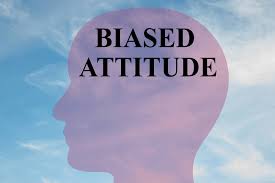Many years ago, my husband invented his own hearing aid. Mike was totally deaf on one side—the best hearing device in the world wouldn’t have helped his right ear. He thought he could improve what the other ear could do, so he consulted an audiologist, who told him she couldn’t help him. The left ear worked well enough, she said, that wearing a hearing aid would make little difference.
And yet Mike struggled to decipher what friends were saying, especially in crowded, noisy places. Determined to solve the problem, he went to Radio Shack. For about $7, he bought a very small sound amplifier, a single earphone and a miniature microphone. With the earphone in place and the amplifier tucked into his shirt pocket, he ran the microphone cord down his right arm inside the sleeve of his jacket or shirt and secured the mic to his wrist. In a noisy restaurant, when he couldn’t quite hear someone sitting to his right, he’d casually rest his hand on the table and extend his arm in their direction.
Mike died 10 years ago, but I was reminded of his low-cost invention last year when Congress passed a law that will permit consumers to buy hearing aids over the counter without consulting a certified audiologist first. The goal is to drive down the price of aids and increase competition in the industry.
An estimated 48 million Americans, including one in three older adults, have lost some of their hearing. Eight out of 10 don’t have hearing aids, mainly because of the cost: on average, $2,300 per ear.
Medicare doesn’t pay for hearing aids, nor do most health insurance companies, and right now the only way to buy a device that is legally considered a hearing aid is through a certified audiologist. That drives up the price. Furthermore, just six companies control 90 percent of the market.
The new law won’t go into effect until 2020. In the meantime, the Food and Drug Administration (FDA) is drawing up regulations and setting standards for over-the-counter (OTC) aids.
There are already some hearing-aid alternatives. Personal sound amplification products (PSAPs) have been available for a while, but by law they can’t be described as aids for the hard of hearing, even if that’s what they look like. They must be sold simply as ways to amplify sound—like Mike’s homemade device. They range from about $20 to $350 each, and their effectiveness and safety aren’t regulated by the FDA.
PSAPs can sound like cutting-edge technology—for example, some have Bluetooth capability and can pipe phone calls or stream music straight into your ears when linked with a smartphone. But in 2017 when Consumer Reports compared four PSAPs, the results were mixed.
The researchers reported that the two more expensive models ($350 and $314 per ear) helped with mild-to-moderate hearing loss provided they were properly fitted and adjusted. One of the PSAPs was designed so wearers could adjust it themselves, but none of the people in the study were able to manage that.
As for the two cheaper models ($20 and $30 per ear), they helped very little and experts said they could potentially damage hearing if they gave too much of a boost to sharp noises, like the wailing of a fire engine.
The impending law will create a new category of hearing aids: devices regulated by the FDA but easily available online or over the counter. Some PSAPs will probably be included in the category along with newer devices.
OTC hearing aids will undoubtedly be cheaper than today’s prescription devices: experts are guessing they might cost as little as $500 per ear. They’re intended only for people with mild or moderate hearing loss because those with severe problems generally need expert adjustments.
We’d all be better off if Medicare and other health insurance would cover prescription hearing aids and audiologists’ services, but that doesn’t seem likely to happen anytime soon. In the meantime, making hearing aids less expensive seems like a good thing.
But some audiologists warn that, since buyers won’t need to consult a doctor or audiologist first, no one is likely to spot medical problems that can cause hearing loss: things like impacted earwax, a perforated eardrum or even a tumor on one of the auditory nerves.
In addition, for many people, hearing aids need careful, individual adjustments. For instance, when I got prescription aids several years ago, I learned that my own hearing loss is much worse in one ear than in the other, and it’s different at different frequencies: I have more trouble picking up high-pitched sounds than low-pitched ones. To compensate, my aids increase the volume for the frequencies where I need help the most, and they do it differently for each ear.
I too have some reservations about OTC aids. When I got my prescription ones, I signed a contract with an audiologist and paid $3,600 up front for two aids and the audiologist’s services for three years. Those services have been very helpful.
During the first weeks after I got the hearing aids, I could have returned them for a refund if I didn’t like them. Since then, if something serious goes wrong with one of my aids (so far it hasn’t), the audiologist will send it to the factory to be fixed—no charge. And batteries are free for the duration of my contract.
There have been minor problems: accumulated earwax occasionally puts one of my aids out of commission and once a connecting wire broke. Each time, the audiologist fixed it. When my hearing deteriorated, she adjusted the aids accordingly, and that made an enormous difference. Before the adjustment, I watched TV with the volume set at 14; since then, even a setting of eight sometimes seems too loud.
The audiologist has also given me basic advice that’s been useful. I’ve had friends who removed their hearing aids whenever they were home alone. She advised me to wear mine as much as possible, especially at first, to give my brain a chance to adjust to a somewhat different, incoming sound stream.
Research shows that the brain changes and reorganizes itself as people become hard of hearing, and studies have linked hearing loss to dementia and less serious cognitive problems. Nobody knows whether hearing aids can prevent this, nor do we know whether simple amplification—by a PSAP, for example—can make a difference. Studies that are underway should provide answers in a few years.
How much of a difference will OTC aids make? My own audiologist predicts they’ll be better than nothing for some but won’t help others, and for most, trying to fix an aid themselves when something goes wrong “will be like trying to do your own car repair.”
Kim Cavitt, AuD, a past president of the Academy of Doctors of Audiology, is more optimistic. She’s hopeful that many more people who need hearing aids will be able to get them, that the FDA will set stringent manufacturing and technical standards, that OTC aids will be adjustable, and that those who can’t manage an adjustment for themselves will turn to an audiologist for help, paying either for an all-inclusive bundle of services or only for the specific services they need. If all of that happens, she believes it will significantly lower costs for millions.
But even in countries where the government covers the entire cost of hearing aids, at most about 40 percent of those who need aids actually get them. Why? Cavitt speculates that for those whose hearing loss isn’t severe, it may not seem worth navigating a time-consuming, government process to get the devices.
It occurs to me, however, that ageism is at least part of the explanation: many people are afraid that if they wear hearing aids, it will be like announcing that they’re old. They’d rather struggle with poor hearing.
For whatever it’s worth, here’s my advice: if you can afford prescription hearing aids and the services of an audiologist, they’re worth it. If you can’t afford them, do investigate OTC devices once they become available. Good hearing aids can make a huge difference in your life.
Even Mike’s simple, homemade device was a great help. It enabled him to have lots of enjoyable dinner conversations.

Flora Davis has written scores of magazine articles and is the author of five nonfiction books, including the award-winning Moving the Mountain: The Women’s Movement in America Since 1960 (1991, 1999). She currently lives in a retirement community and continues to work as a writer.



